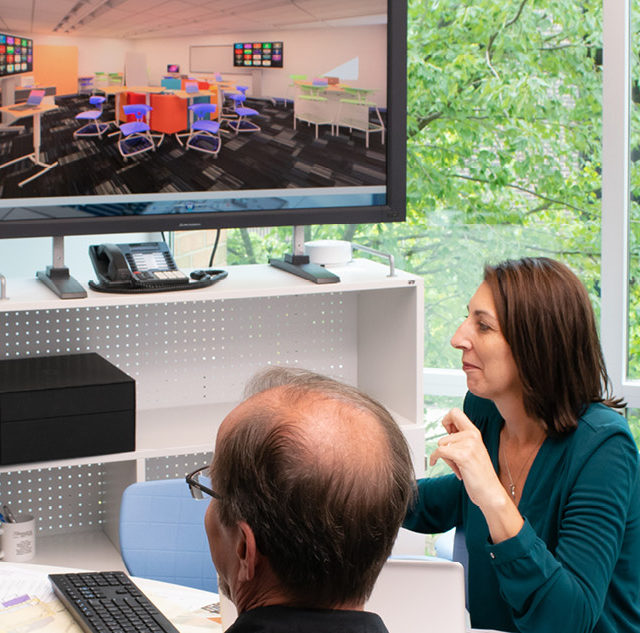Insights
Using Visualization to Enhance the Design Experience
By Brad Swank, RA
Virtual reality and visualization tools have transformed how we experience spaces that are in design. These new technologies allow us to walk (or fly) through our buildings before they are constructed, effectively getting a three-dimensional preview of the spaces. This has become an exciting way to show off a final design, but the real value lies in utilizing these visualization tools throughout the design process for a collaborative architect-client experience.
Visualization has not only changed how I design schools, it’s completely transformed the way I interact with clients. Instead of acting as a vendor delivering a commodity (which the client may like or send back to the drawing board), we now experience designs together using virtual reality and visualization. This allows me to obtain real-time feedback on how the space looks or feels to the client, and I often make changes right in the middle of our meeting, or try out several options to see what they prefer. In a typical design process, I come with my industry knowledge and the client comes with their expectations and needs for the space. We both hope to end with a design that fulfills their educational vision, and visualization helps us get there together in a collaborative and informed way. I view it less as a presentation platform than an opportunity for us to design the project together.
With these new capabilities, I am inviting clients into the design process from the earliest of stages. So much of design isn’t what a space will look like, but how it will make users feel and how it will support their needs. Incorporating these technologies early ensures the client gets exactly what they want, and it allows us to more effectively experiment with new ideas throughout. As the design progresses, eventually we have a complete virtual environment in which the client and I can roam together as if we were actually in the new school.
For the design of the new Hilliard Memorial Middle School in Hilliard, Ohio, visualization was integral in developing a future-ready learning environment that matched and supported the district’s vision:
The transformative leap to virtual reality and visualization has allowed for exciting new ways to present designs, but utilizing these tools throughout the design process not only makes for a better experience—it ultimately results in a final product that supports the district’s educational vision and gives them exactly what they want. Using visualization, architects and clients can act as partners in every step of the design journey.
Designing School-Based Health Centers
By Dan ObrynbaSchool-based health centers are becoming integral components of public schools, primarily serving the needs of students and staff, with the potential to also serve the broader community. School-Based Health Centers are usually run by separate
Full ArticleSmart Schools Roundtable: School Safety by Design
By Zachary SprungerThe tragedy at Robb Elementary School in Uvalde, Texas, has once again brought the issue of school security into the national conversation. In 2020, Fanning Howey hosted a school security webinar featuring Michael Dorn, Executive
Full ArticleThe Modern Art Lab: Best Practices for K12 Art Classroom Design
By Carla Remenschneider and Steven HerrSocial-Emotional Learning & Art Education Art education is integral to the way in which students learn about self-expression and develop their creative interests. It is well suited for addressing elements of social-emotional learning including, but
Full Article